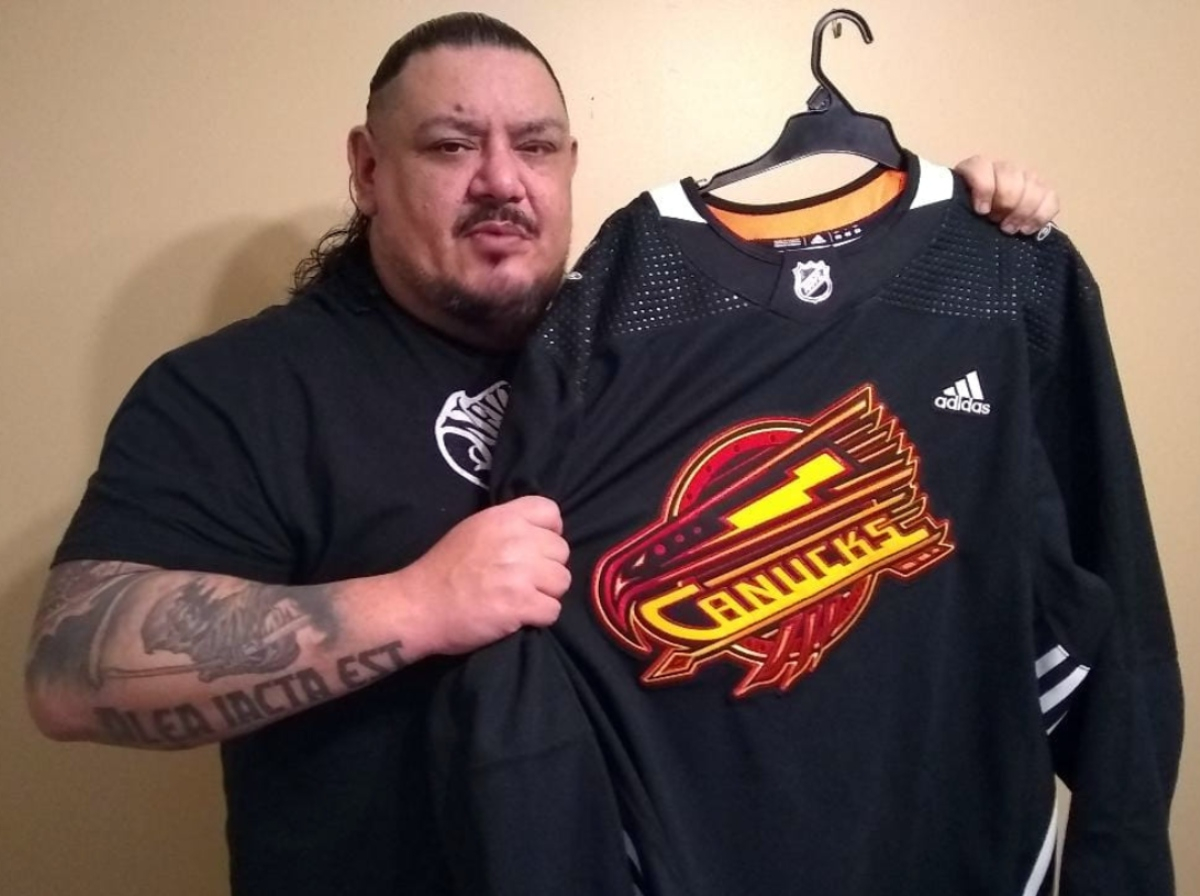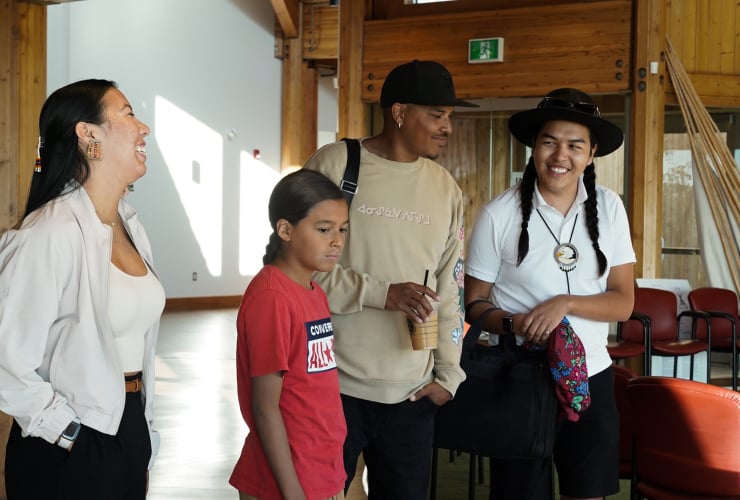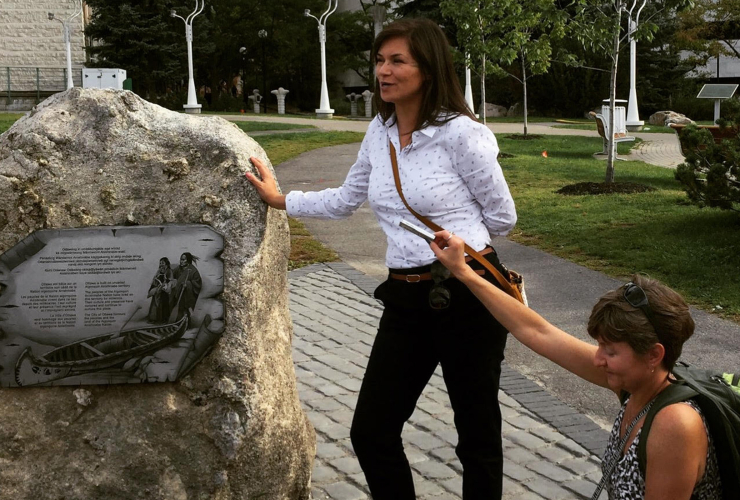When Jay Odjick was five years old, he and his brother unmasked Spider-Man at a comic book shop in Rochester, N.Y. Their plan, formulated in the lineup to meet the superhero, was prompted by Odjick’s brother questioning the veracity of the man in the Spidey suit.
“He leans over to me and he goes, ‘I don't think that's really Spider-Man.’ And I go, ‘What are you talking about? It says Spider-Man on the sign and there’s Spider-Man.’”
But the seed of doubt was planted. And when it was their turn to meet the superhero, Odjick asked to see his web-shooters and his brother jumped on the opportunity to grab Spider-Man’s mask.
“You think he would have been a little prepared, but he had nothing,” Odjick recalled. “And my brother got the mask about halfway up his head, he screamed, and we got kicked out of the store.”
Odjick’s fascination with superheroes survived, nonetheless. He went on to create a superhero that means just as much to some kids as Spider-Man meant to him in that moment.
Odjick, a writer and illustrator from Kitigan Zibi First Nation, recently spent a semester at the University of Ottawa, where he shared his knowledge with students as the university’s first Indigenous writer-in-residence. A large part of his career has centred around increasing and improving the representation of Indigenous people in comics, animations and children’s books — something he says didn’t exist when he was a kid.
In his late teens, Odjick said he began to think deeper about the lack of “cool Indigenous superheroes” in the world he’d grown to love.
The only Indigenous characters in comics at the time were stereotypical representations, like Apache Chief from the DC Comics enterprise, who was dressed in a loin cloth and given a magic word to say in the language of an Indigenous group that was not his own.
“My thing about Apache Chief is, I'm not convinced he's an Apache nor a chief because I know some Apache and they say they've never heard of this joker, let alone elected him,” Odjick said.
Offended by the lack of authenticity, Odjick decided to create his own version of the hero he wanted to see. In his early twenties and purely self-taught, Odjick created the comic book, Kagagi: The Raven, in which a teenager inherits an ancient power that he must use to fight the age-old evil known as Windigo.
“I self-published three issues of this book myself by literally mailing copies of the comic to comic shops,” he said.
Shortly after, Odjick met Sean Patrick O’Reilly, owner of the publisher Arcana Comics, at a comic book convention in Toronto and O’Reilly offered to bring Kagagi over to his company. From there, Kagagi took off.
“That made the book available across the entirety of North America,” he said. “For a kid from a rez who was just starting out in this game, it was a pretty tremendous ability to have that kind of reach with a comic book.”
In 2014, with little time to slow down in between, Odjick and O’Reilly pitched an animated version of the comic to APTN and soon, Kagagi was broadcast across the country every Sunday morning. It aired in three different versions: English, Algonquin and English with 20 per cent Algonquin dialogue.
“The coolest thing was seeing videos that people were sending me or tagging me in on social media,” he recalled.
“I remember one in particular, where there was a kid lying on a swing and a parent was pushing them and the kid was going ‘I'm like Kagagi. I'm flying.’ And that's wild.”
In 2017 and 2019, Odjick worked with famed children's author Robert Munsch as an illustrator for two of his books. The second one, Bear for Breakfast, was published in Algonquin in written and audiobook format, per Odjick’s request.
“For parents who want to maybe not even just teach the language to their kids, but want to learn the language themselves because they never had a chance, it’s a pretty unique opportunity to get into the language because the book is not super dense,” he said.
Last fall, when Odjick arrived at the University of Ottawa he was given an office just down the hall from Robert Stacey, director of the English department. The laughter pealing from the office was contagious, Stacey said.
Odjick was the first writer-illustrator to take on the role and his wealth of knowledge as a self-made artist inspired students just starting out, said Stacey.
“We’ve had writers-in-residence here where students have been reluctant to come and talk to them,” Stacey said. “But Jay had no trouble… He's such an approachable, friendly, genuinely funny guy.”
Heading into the position, Odjick said he was a little shy because he felt he hadn’t written many books compared to previous writers-in-residence.
“I'm known more as an artist. I wasn't sure I had done enough as a writer,” he said.
Now, Odjick has six book deals on the go and joked the university should have waited a couple of years to bring him on. But even as he nears the age of 50, Odjick said he’s still not comfortable calling his decades of work “important.”
“Doctors, surgeons, firefighters, people like that are doing important work. I'm just sitting here drawing cartoons and stuff,” he said.
“But if it can help make a difference in anybody's life, I think we have to try and do all we can to do the best job that we can.”






Comments